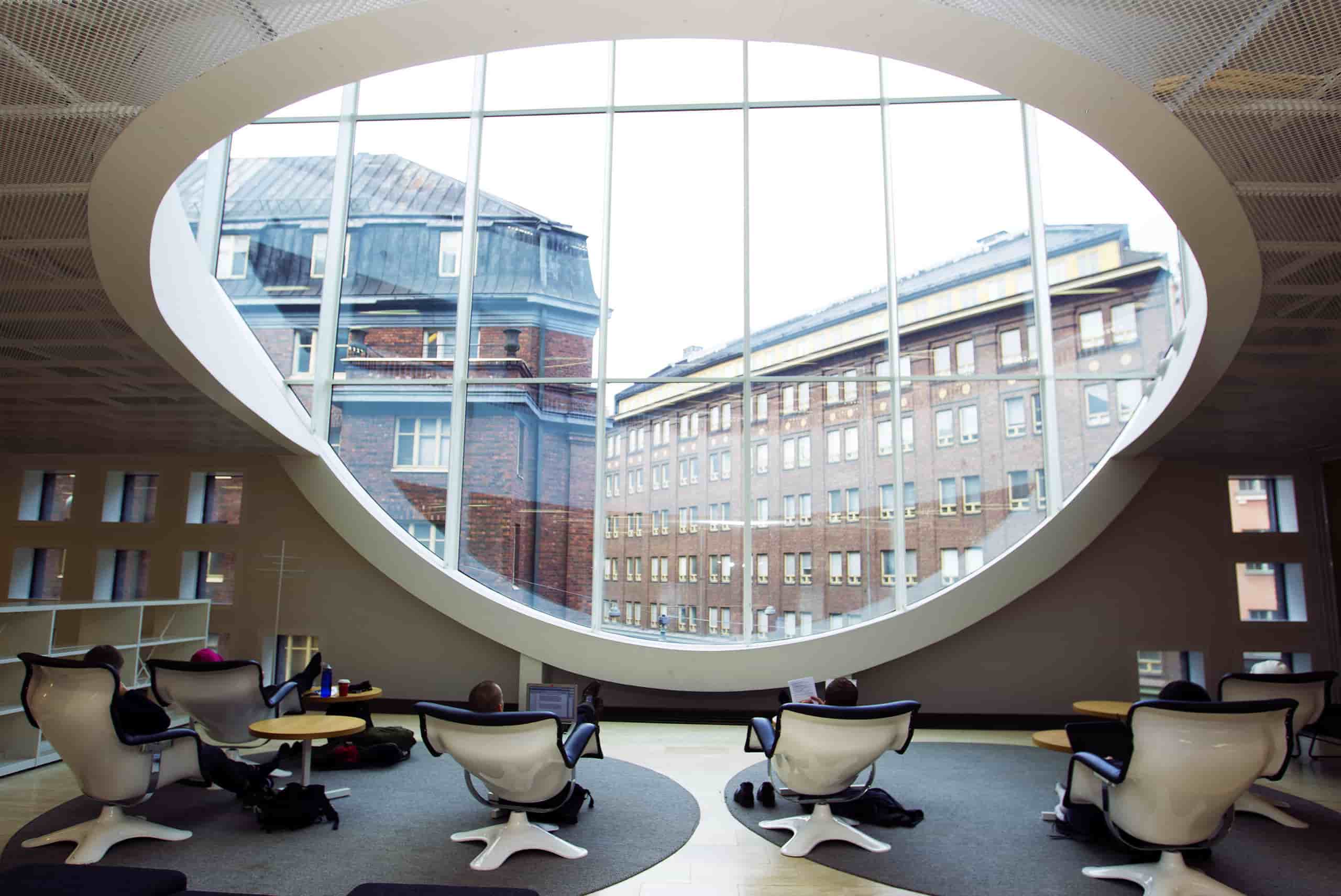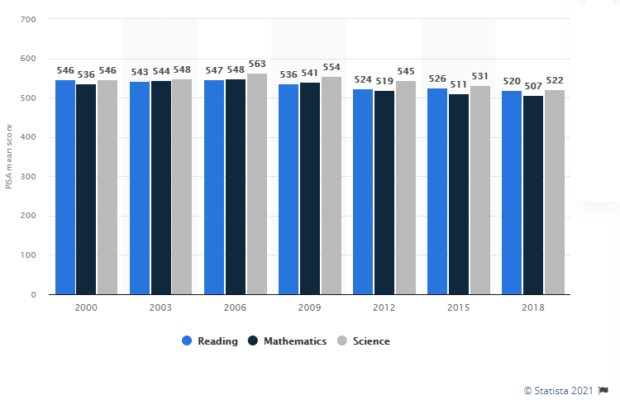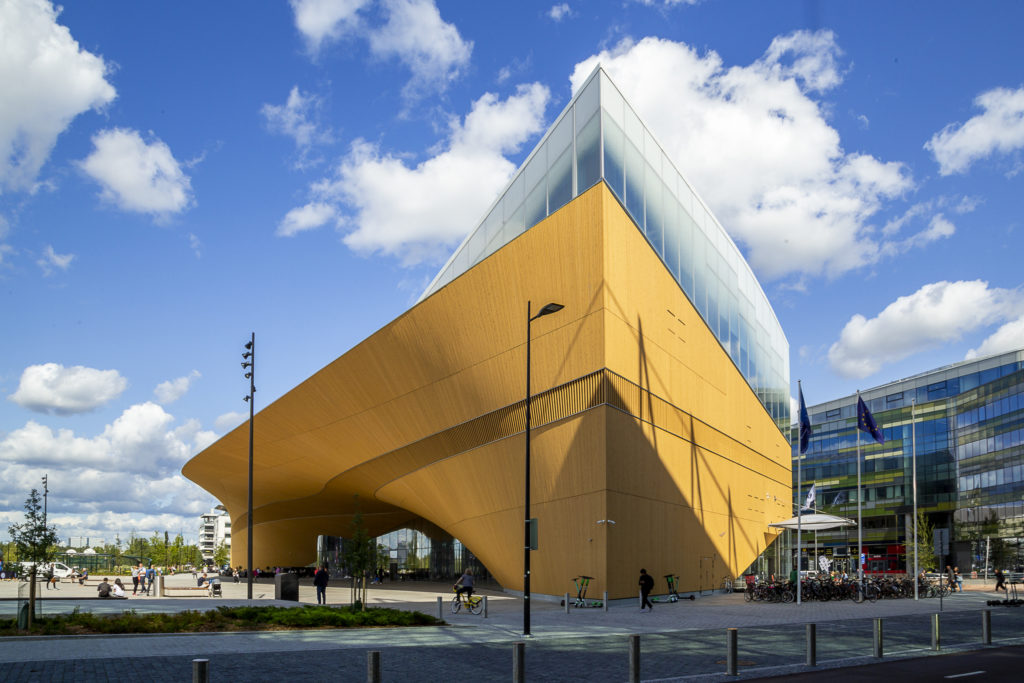
-Education
Education is one of the cornerstones that builds Finnish welfare society. Differences in the learning results of different schools are very small and nearly all students complete comprehensive school within target time.
Preschool education, comprehensive education and upper secondary education is free of charge and also higher education is for the most part free of charge.
The goal is for everyone to have an equal opportunity to receive high quality education regardless of the family’s income and to grow up to become active citizens. Adult education is also part of the system and it is intended for adults which includes a multitude of alternatives from comprehensive to higher education.
Did you know that Finland scores one of the highest in PISA?

Why is Finland’s education system the best in the world?
- There is no standardized testing system and all children are graded based on an individualized grading system which is set by their teachers.
- Cooperation among pupils is encouraged, not competition.
- The main focus is to create a happy, harmonious, and healthy learning environment for students rather than increasing test scores.
- The national curriculum provides only guidelines and this gives room to teachers to develop their teaching methods.
- All teachers are required to hold a master’s degree.
- All schools are funded by the government and this creates equal opportunities for all regardless of their individual differences.
In Finland, children are entitled to receive early childhood education before they reach school age. Early childhood education is organised in day care centres and family day care. Children may also participate in early education together with a parent in a playground. Children may receive at least 20 hours of early childhood education per week, or more if the parents are working or studying. The goal is to support children’s development and well-being. They learn, for example, social and manual skills and gain different types of information. Children also acquire skills that help them learn more.
A lot of playtime and outdoor activities are included. If the child’s native language is not Finnish or Swedish, he or she will receive support in learning Finnish or Swedish. The child may also receive special needs education, if necessary.
In Finland, municipalities organise early childhood education. It is tax funded and therefore more affordable to families. There is also private early childhood education available in Finland. Trained early education teachers and child nurses work with children.
In Finland, children must attend preschool education for one year before compulsory education begins. Preschool education usually starts during the year when the child turns six. Municipalities organise preschool education and it is free of charge for families. Preschool education is given by early education teachers who have graduated from a university. Preschool education is usually organised from Monday to Friday, four hours a day. In addition to preschool education, the child can also attend early education if the parents are working or studying.
During the preschool year, children learn skills that are useful in school, such as letters. They are not, however, taught how to read. If the child’s native language is not Finnish or Swedish, he or she will receive support in learning Finnish or Swedish. A preschool day also includes playtime and outdoor activities.
In Finland, comprehensive education normally starts during the year when the child turns seven. All children residing in Finland permanently must attend comprehensive education. Comprehensive school comprises nine grades. Compulsory education ends when the child has completed the entire comprehensive education syllabus or when ten years has passed since the beginning of compulsory education.
Municipalities organise comprehensive education. It is tax funded, therefore free-of-charge for families. There is about 20 hours of tuition per week for lower grades and more for higher grades.
All comprehensive school teachers in Finland have a Master’s degree. Comprehensive school class teachers, who teach grades 1–6, are specialised in pedagogy. Grade 7–9 teachers are specialised in the subjects they teach.
Teachers are at liberty to plan their tuition independently based on the national and local curricula. Recently, curricula have emphasised, for example, entities that cover several subjects, investigating daily phenomena and information and communications technology.
If the child or young person has only recently moved to Finland, he or she may receive preparatory education for comprehensive education. Preparatory education usually takes one year. After that, the student may continue to study Finnish or Swedish as a second language.
Adult immigrants who have no comprehensive school leaving certificate from their native country may complete comprehensive school in upper secondary schools for adults.
The most common options after comprehensive school are upper secondary school and vocational education. They are considered upper secondary education.
Upper secondary schools provide all-round education which does not lead to any profession. The same subjects are studied in upper secondary schools as in comprehensive school, but the studies are more demanding and independent. At the end, students usually take the matriculation examination. Upper secondary school takes 2–4 years, depending on the student. After finishing, students are eligible to apply to universities, universities of applied sciences or upper secondary school based vocational education.
Most upper secondary schools provide education in Finnish or Swedish language. Larger cities have some upper secondary schools that provide tuition in other languages, such as English or French.
Adults may take upper secondary school studies in upper secondary schools for adults. There, it is possible to either take separate courses or complete the entire upper secondary school syllabus and take the matriculation examination. Tuition may include contact teaching, distance education, online education and independent studies.
Good language skills are necessary in upper secondary school. If the student’s native language is some other than Finnish or Swedish and his or her language skills are not yet at the level required for upper secondary school studies, he or she can apply to preparatory education for upper secondary school.
Vocational education is more practice-oriented than upper secondary school education. Completing a vocational qualification takes about three years. After this, students can continue their studies to complete a further vocational qualification or a specialised vocational degree. On-the-job learning is an essential part of the qualification. If students so choose, they can progress from vocational education to higher education.
If your language or study skills are not adequate for vocational education, you can apply for preparatory vocational education.
After finishing upper secondary studies, one can progress to higher education. In Finland, higher education is provided by universities and universities of applied sciences.
Studying in an institute of higher education may be free or subject to a charge. You will be charged tuition fees if you are not an EU or EEA citizen or a family member of an EU or EEA citizen and are studying towards a Bachelor’s or Master’s degree in an English-language degree programme.
The education provided by universities of applied sciences is more practice-oriented than that offered by universities. Tuition also includes on-the-job learning. Completing a Bachelor’s degree in a university of applied sciences takes 3.5–4.5 years. If you also want to complete a Master’s degree, you must first acquire three years of work experience from the same field.
University tuition is based on scientific research. Completing a Bachelor’s degree in a university takes about three years and a Master’s degree about two more years. Universities organise English language tuition in some of their degree programmes. However, the teaching language of most degree programmes is either Finnish or Swedish.
Once you have completed a Master’s degree, you can apply for a right to complete further studies and earn a Doctoral degree.


